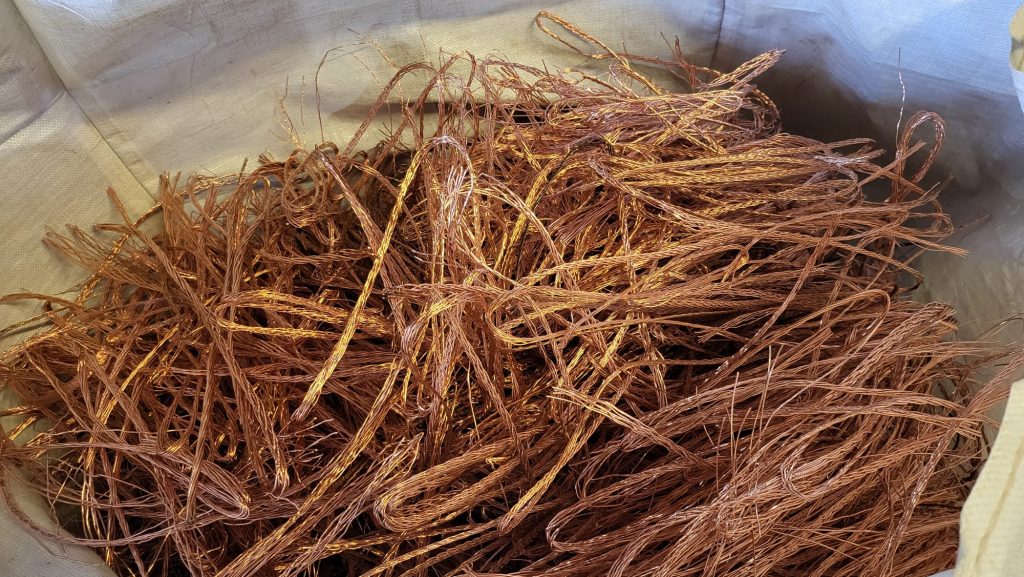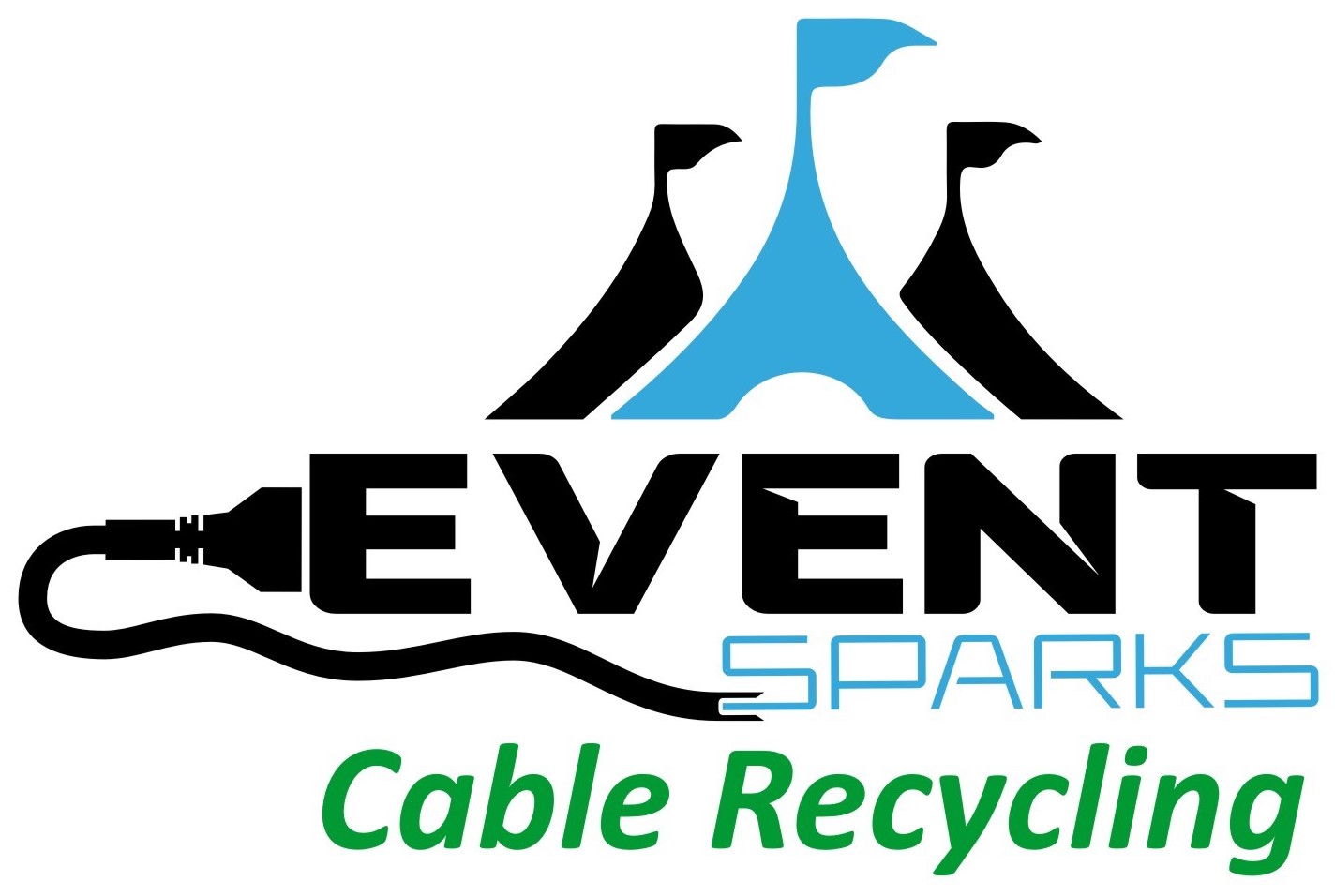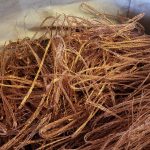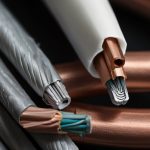At Event Sparks Cable Recycling, we take all cable types as long as they have a copper conductor. In our experience, these are the most common cable types we see from customers. Check if you have these cables and could earn money when they can’t be used anymore. These cable types are common for most electrical/construction companies, however you might find some in things you use.
Twin & Earth Cable
Twin & Earth and Core & Earth are both found in every home. They are also widely used in commercial installations. The typical types of companies with lots of Twin & Earth are some electrical contractors (especially if they generally do residential, commercial and industrial properties). Also construction companies, utility companies, data centres and telecom companies.
This is a prevalent cable type that is easy to recycle. Twin & Earth is time consuming to strip but it’s easily done. It is however great feedstock for processing with a granulator.
Single Cable
Single consists of a single solid core of copper to allow for efficient transmission of electricity. This cable is typically insulated with a layer of non-conductive material such as PVC (polyvinyl clinic) or rubber. A single cable is used in various electrical applications such as wiring residential, commercial and industrial buildings, electronic devices and automotive wiring for vehicles.
Singles are great feedstock for a hungry granulator. The multi-strand variety known as tri-rated is a lot harder to hand strip.
Flex Cable
Flex cable refers to a type of electrical cable which is meant to be flexible. This cable typically consists of multiple conductive cores surrounded by insulation, sheathing and possibly shielding layers. The insulation is typically made of PVC (polyvinyl chloride) or rubber. Flex cable is typically found in portable electrical appliances such as Hoover’s or kitchen appliances. They can also be found in machinery with moving parts (e.g. conveyor systems), or anywhere where flexibility is required in the wiring.
Due to the bendiness of the cable, it is a nightmare to strip by hand and much better to be left for the granulator.
Cat 5/6 Cable
Cat 5 and 6 cables are the types of twisted pair cables used in Ethernet networking. Both utilize the twisted pair design where multiple pairs of copper wires are twisted around each other. This reduces electromagnetic interference and crosstalk between other wires. This design also helps to ensure reliable data transmission in networks. The types of companies you can expect to find cat 5/6 cable from are networking and telecommunications, electrical (with specialization in networking systems), IT services and data centre operators.
Cat 5/6 is easier to process than some data cables, however, its lower percentage of copper makes it less valuable but still worth recycling.
Steel wire armoured (SWA)
Steel wire armoured (SWA) is a type of electrical cable used for power distribution in various applications, particularly where mechanical protection and resistance to external damage are essential. SWA consists of several layers including copper, insulation, bedding, steel wire armour (galvanized steel wires around the cable) and a sheath of PVC. SWA is used where the cable needs protection e.g underground and outside installations. Nevertheless, SWA cable can be found indoors as well.
HO7 Cable
HO7 consists of stranded copper surrounded by insulation and a protective outer sheath. This cable is commonly used within the construction industry so can commonly be found on building sites or electrical wiring companies. It can also be found within telecommunications companies as HO7 is used by some companies to wire telephone lines and data networks. It is also used for connecting solar panels, wind turbines and other renewable energy sources. HO7 is typically a very flexible cable however can sometimes be rigid.
To process HO7 we need to completely clean down the granulator and the cable and change settings. The granulator then needs to be cleaned down afterwards. This is a good cable to granulate but we stockpile to make it worth it.
Low Grade
Low grade is a category of cables rather than a type of cable. It refers to cables that have a little copper percentage. They usually contain lots of plastic and other contents with a small wire of copper through the middle. Some examples of low-grade cables are coaxial cables and HDMI cables. These all contain lots of other components and a little strip of copper.
We pay roughly £0.50 per kilo for low-grade cable (this does change according to the copper prices).
Bright Copper
Bright copper is a high-quality copper scrap that hasn’t been contaminated or oxidized. It has minimal corrosion due to the lack of oxidization and clean surface. It is the highest-paid scrap that we pay customers due to us having no work to process it.
Bright copper is the product of stripping cables. Some cables we strip into bright copper include single over2.5mm and large Twin and Earth, however, there are more.

Copper Clove
Copper clove is the term we use for granulated copper. This is the product of recycling cables using our shredder and granulator. Our copper clove is between 98% and 99.9% pure copper after the full process of recycling.
An example of the cables we recycle to produce copper clove is small T&E, Flex, Low-grade and everything else that we shred rather than strip.




